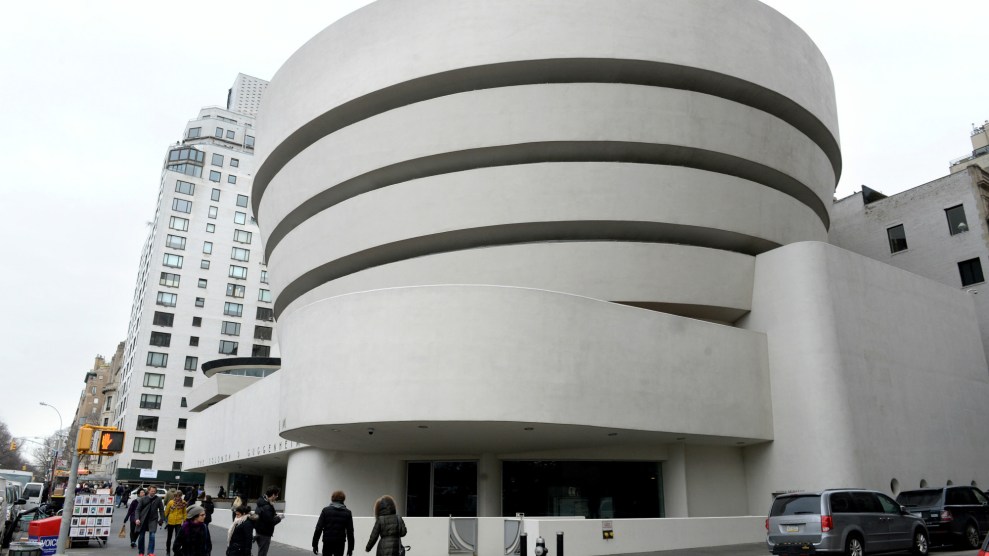
Felix Hörhager/picture-alliance/dpa/AP Images
Purdue Pharma’s production and sale of OxyContin helped make the Sacklers one of the richest families in America—and, in turn, a top donor to some of the world’s largest art museums. But it also helped create and abet the opioid crisis, and on Friday, the Solomon R. Guggenheim Museum in New York announced it would no longer take Sackler money.
The move comes three days after the National Gallery of Art in London rejected a one-million-pound donation from the Sacklers. But the decision by the Guggenheim is potentially bigger. Between 2001 and 2017, the museum accepted at least $6.4 million from the Sackler family, and until recently, Mortimer D. Sackler, the patriarch of the family that owns much of Purdue Pharma, sat on the Guggenheim’s board of trustees. Pressure had been building on the Guggenheim and other prominent cultural institutions to reject money from the Sacklers. Just last month, protesters stormed the Guggenheim brandishing fake prescription pads.
The Guggenheim has been the fourth-largest recipient of Sackler donations this century. But a number of the most iconic cultural institutions around the world continue to accept the family’s money, including the American Museum of Natural History and the Metropolitan Opera. Here are the top 10 beneficiaries of Sackler money since 2001:
Victoria and Albert Museum: $12.7 million
New York Academy of Sciences: $11.3 million
Dia Art Foundation: $10.2 million
Guggenheim: $6.4 million
American Museum of Natural History: $5.6 million
Science Museum of London: $2.6 million
Metropolitan Opera Association: $2.1 million
Brooklyn Museum: $1 million
American Fund for the Tate Gallery: $940,000
Royal College of Art: $803,150
Note: Includes donations from the Dr. Mortimer and Theresa Sackler Foundation, the Mortimer D. Sackler Foundation, the Raymond and Beverly Sackler Foundation, and the Richard and Beth Sackler Foundation













